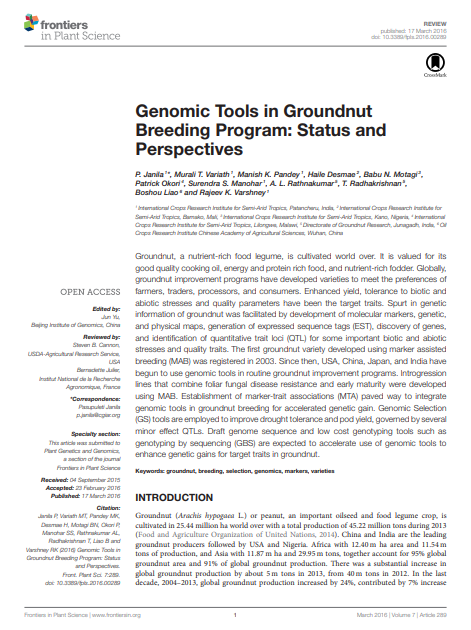Genomic Tools in Groundnut Breeding Program: Status and Perspectives
Summary
Groundnut, a nutrient-rich food legume, is cultivated the world over. It is valued for producing good quality cooking oil, energy and protein-rich food, and nutrient-rich fodder. Globally, groundnut improvement programs have developed varieties to meet the preferences of farmers, traders, processors, and consumers. Enhanced yield, tolerance to biotic and abiotic stresses, and quality parameters have been the target traits. A spurt in genetic information on groundnut was facilitated by the development of molecular markers, genetic, and physical maps, generation of expressed sequence tags (EST), discovery of genes, and identification of quantitative trait loci (QTL) for some important biotic and abiotic stresses and quality traits. The first groundnut variety developed using marker-assisted breeding (MAB) was registered in 2003. Since then, the USA, China, Japan, and India have begun to use genomic tools in routine groundnut improvement programs. Introgression lines that combine foliar fungal disease resistance and early maturity were developed using MAB. Establishment of marker-trait associations (MTA) paved the way to integrate genomic tools in groundnut breeding for accelerated genetic gain. Genomic Selection (GS) tools are employed to improve drought tolerance and pod yield, governed by several minor effect QTLs. Draft genome sequence and low-cost genotyping tools such as genotyping by sequencing (GBS) are expected to accelerate use of genomic tools to enhance genetic gains for target traits in groundnut.
Open resource Download resource Access resource on external site

